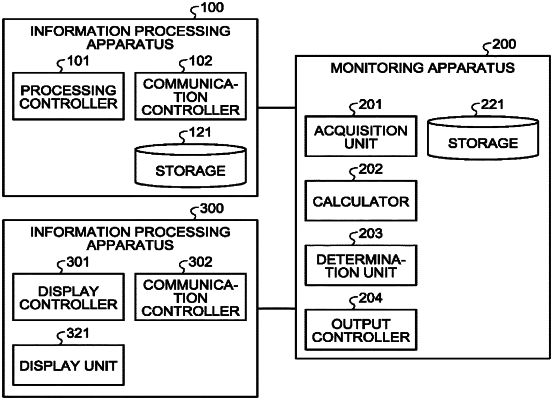| CPC G06F 11/3452 (2013.01) [G06F 11/0766 (2013.01); G06F 11/302 (2013.01); G06F 11/3065 (2013.01); G06N 3/043 (2023.01); G06N 3/08 (2013.01)] | 10 Claims |

|
1. A monitoring system comprising:
storage configured to store at least a plurality of pieces of first output data that are obtained by inputting first input data in a learning model that is learned, or first statistical information that is obtained from the plurality of pieces of first output data;
one or more processors configured to:
train the learning model using the first input data using backpropagation;
acquire a plurality of pieces of second output data that are obtained by inputting second input data in the learning model;
calculate a degree of abnormality indicating at least one of a degree of change in second statistical information that is obtained from the plurality of pieces of second output data with respect to the first statistical information, or another degree of change in the second statistical information with respect to third statistical information that is calculated from a plurality of pieces of fourth statistical information including the first statistical information;
determine whether or not there is an occurrence of an abnormality in the learning model, based on the degree of abnormality;
output information indicating the occurrence of the abnormality, in a case where the occurrence of the abnormality is determined;
extract, in a case where the occurrence of the abnormality is determined, abnormal data that is at least one piece of the plurality of pieces of second output data that is a cause of the abnormality, among the plurality of pieces of second output data; and
output internal information indicating how the abnormal data is processed inside the learning model, the internal information including information visualizing a relationship between a boundary between classification classes and the abnormal data.
|